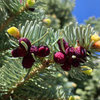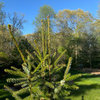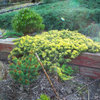Pseudotsuga menziesii
17 years ago
i need a thumbnail sketch of the two variations of doug fir ....
i know one is known as coastal .... whats the other ... mountain???
and which should i have trouble with in zone 5 ....
I NEED SOMETHING REAL SIMPLE ... so i can commit it to memory ... so the kids wont make me forget the details before i turn off the computer ...
THANK YOU ... ken





pineresin
ken_adrian Adrian MI cold Z5Original Author
Related Discussions
Pseudotsuga menziesii cultivars 2012
Q
Pseudotsuga menziesii "Arrowhead Blue" cones
Q
Pseudotsuga menziesii var. glauca??
Q
Is anyone growing Pseudotsuga menziesii in the South (7b+)?
Q
torreya-2006
tsugajunkie z5 SE WI ♱
pineresin
redwingconifer
tsugajunkie z5 SE WI ♱
spruceman
conifers
pasadena
wisconsitom
conifers
pineresin
torreya-2006
pineresin
torreya-2006
conifers
Embothrium
botann
wadet
Embothrium
botann
basic
botann
Embothrium
wadet
Embothrium
basic
Embothrium
ken_adrian Adrian MI cold Z5Original Author